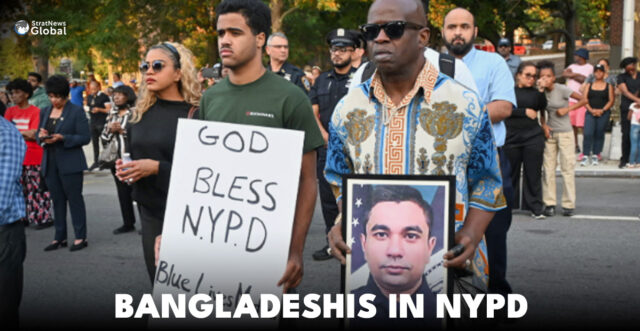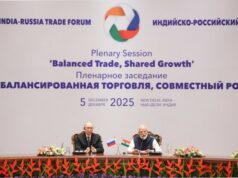Inside a three-story mosque in the Bronx, dozens of New York City police officers sat cross-legged in solemn silence as they had gathered to honour one of their own—Detective Didarul Islam—the Bangladeshi American NYPD officer who was fatally shot while in uniform just days earlier.
Detective Islam was among the victims of a brutal shooting spree on Monday night, when a gunman stormed a Park Avenue office building, opening fire in the lobby and on an upper floor, killing four people.
In recognition of his service, Islam was awarded a posthumous promotion, but his death sent a particularly strong shock through the NYPD’s growing community of Bangladeshi American officers.
Bangladeshis’ Presence In NYPD
Islam, who immigrated to the United States from Bangladesh 16 years ago, was part of a rapidly expanding cohort of Bangladeshi Americans in the department.
Over the past decade, their numbers have surged, representing a new chapter in the NYPD’s long tradition of integrating immigrant communities seeking security, opportunity, and belonging in America’s largest police force.
“For us, being police officers means serving New Yorkers and helping the community,” said Sergeant Ershadur Siddique, president of the Bangladeshi American Police Association. “It shows we’re part of New York, part of America.”
Fastest-Growing Fraternal Group
The association, founded in 2015, has grown swiftly, now representing nearly 1,000 of the NYPD’s 34,000 uniformed officers, alongside 1,500 civilian employees.
Members include four captains, an inspector, and many others across ranks and roles, making it the department’s second fastest-growing fraternal group.
Islam himself had often encouraged Bronx residents to consider becoming traffic enforcement agents—a job many in the community have embraced.
Like the Irish Americans of earlier generations who once dominated the NYPD, Bangladeshi Americans are now finding their place in the force, drawn by the promise of stable pay, benefits, and public service.
Evolving Demographic Landscape
The face of the department has changed steadily over the years, with 12% of uniformed officers now identifying as Asian—closely matching the city’s demographics—along with 33% Hispanic and 17% Black officers. Among civilian employees, 17% are Asian and 45% are Black.
A rise in minority and immigrant-based fraternal organisations reflects this transformation. Alongside the Bangladeshi American Police Association, others include the New York Dominican Officers Organisation and the Pakistani American Law Enforcement Society.
The Bangladeshi association’s founding mission was not only to encourage recruitment and career growth but also to counter post-9/11 Islamophobia.





